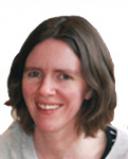Midlife
Midlife Crisis? Philosophy Can Help
Two recent books provide complementary advice in contrasting styles.
Posted March 21, 2018

On average, we are most dissatisfied with our lives when we are 46 years old. I first learned this fact when I was 46 myself. Now that I am 47, things can only get better, right?
Each of us has our individual ups and downs, triggered by life’s delights and setbacks, through changes in our families, work, and the wider environment of economics, politics, and social shifts. But when economists David Blanchflower and Andrew Oswald reviewed surveys from across the world, they found again and again that average life satisfaction is highest in youth and in old age, with a significant dip in the middle. On their graph the line was U-shaped - our mid-forties are the slough of despond.
Why is this? There are lots of practical reasons why mid-life can be tough. Many of us are caring in two directions, with dependent children at home and ageing parents also needing our attention. Meanwhile we are no longer in the exciting early years of career-building and homemaking, when anything seems possible, yet nor do we see the ease and freedoms of retirement on the horizon. Even the most modest aspirations to good looks and physical fitness require ever greater efforts on our part, as we struggle against the inevitable.
But it’s not just the practicalities which get us down in middle age. MIT philosophy professor Kieran Setiya precociously started to feel a sense of mid-life crisis in his thirties. By all outward measures, things were going well for him: he had everything in place, including family and a rewarding career. By his own standards, his life was a success. Yet, as he writes:
When I paused to contemplate the life I had worked so hard to build, I felt a disconcerting mixture of nostalgia, regret, claustrophobia, emptiness, and fear. (Setiya 2017: p.2)
True to his calling, Setiya sought solutions to his predicament by delving into the philosophical classics, and the result is his wonderful new book Midlife: A Philosophical Guide (Princeton University Press).
Some of us reach mid-life with decisive regrets, realising we have taken the wrong path professionally or romantically. But, as Setiya points out, even those who are lucky enough to have avoided major mistakes can feel deep unease. It’s not that I think I would have been happier accepting that job overseas, or marrying my high-school sweetheart, or remaining in the town where I grew up. Yet there is sadness in not knowing those alternative lives, in losing track of how things could have been different.
Setiya’s advice is to accept that these are indeed losses, but that such loss is the price of the richness of our current lives. The only way to avoid this lingering curiosity about alternatives would be to have incredibly fixed, narrow tastes, to be capable of enjoying only one kind of life, able to reject all other options without a second thought. And if you were that kind of person, you would be less able to appreciate the life you are actually living, in all its texture and complexity.
How then can we clamber up out of the U-shaped trough, taking pleasure in the life we have without ignoring the lives we might have had? Setiya eloquently reminds us that we should make time for ‘a-telic’ activities; that’s to say, things that we do for their own sake, not merely as a means to some later achievement or purpose. An atelic activity could be something as simple as listening to music, playing with your kids, or taking a stroll. When you are listening to music you love, then you are not deferring gratification, you are already doing what matters. If you are interrupted or distracted, your time was not wasted: you were not listening to the music only in order to get to the end.
In contrast, a telic life, which is directed entirely towards achieving goals, will eventually feel empty because we reach our goals and think ‘now what?’ As Setiya appreciates, a functioning life needs both long-term and short-term goals. Otherwise, how would the dinner get made and the rent get paid? And some essential tasks are just boring or nasty, no matter which way we look at them. But where we can, we should value our activities for their own sake, taking a walk in order to take a walk, not just to get our step-count up, and playing with our kids in order to play with our kids, not just to strengthen our relationship or improve their motor skills.
As I turned 47, I also read a very different book about mid-life, Miranda Sawyer’s Out of Time (4th Estate, 2016). Sawyer is a successful British journalist and broadcaster who led a carefree, wild-child existence through her twenties and thirties, then found herself settled in her late forties with a sense of malaise despite her rewarding family and professional life. Sawyer’s book is more intimate than Seitya’s; it features less Aristotle, and more sex, drugs, and rock-and-roll. Yet Sawyer also finishes by recommending some very atelic activities: running, listening to music, reading, teaching what you know, and learning something new.
There is no single solution to the mid-life crisis, but self-help means spending at least some of your time focused on what you are doing right now, and doing it for its own sake, as opposed to delving into the past or planning for the future. Both Sawyer and Setiya are fans of getting lost in a good book, and both have provided us with the opportunity to do just that.
References
Seitya, Kieran (2017): Midlife: A Philosophical Guide, Princeton University Press.
Sawyer, Miranda (2016): Out of Time: Midlife, If You Think You're Still Young, 4th Estate.
Blanchflower, David and Oswald, Andrew (2008): 'Is Well-Being U-Shaped Over the Life Cycle?', Social Science and Medicine 66, 1722-49.




